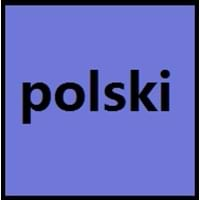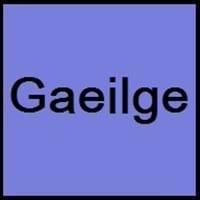Polish vs Irish
Countries
European Union, Poland
European Union, Ireland
National Language
Poland
Ireland
Second Language
Belarus, Czech Republic, England, Lithuania, Slovakia, Ukraine
Ireland
Speaking Continents
Europe
Europe
Minority Language
Belarus, Czech Republic, Hungary, Slovakia, Ukraine
United Kingdom
Regulated By
Polish Language Council (Rada Języka Polskiego)
Foras na Gaeilge
Interesting Facts
- Polish Language has many loanwords from Russian, Czech, French, Italian, Hebrew and German Languages.
- The earliest writings found in polish language was list of persons and place names, is dated to 1136.
- In Irish language, there are no exact words for "yes" or "no".
- There are different set of numbers for counting humans and another set for counting non-humans in Irish Language.
Similar To
Czech, Slovak, Serbian Languages
Not Available
Derived From
Not Available
Not Available
Alphabets in
Polish-Alphabets.jpg#200
Irish-Alphabets.jpg#200
Writing Direction
Left-To-Right, Horizontal
Left-To-Right, Horizontal
Thank You
dziękuję
Go raibh maith agat
How Are You?
Jak się masz?
Conas atá tú ?
Good Night
dobranoc
Oíche mhaith
Good Evening
dobry wieczór
Tráthnóna maith duit
Good Afternoon
dzień dobry
Tráthnóna maith duit
Good Morning
Dzień dobry
Dia dhuit ar maidin
Please
proszę
le do thoil
Sorry
Przepraszam
Tá brón orm
I Love You
kocham Cię
Is breá liom thú
Excuse Me
przepraszam
Gabh mo leithscéal
Dialect 1
Kashubian
Connacht Irish
Where They Speak
Poland
Connacht
How Many People Speak
Not Available
Dialect 2
Masovian
Munster Irish
Where They Speak
Poland
Munster
Dialect 3
Silesian
Ulster Irish
Where They Speak
Czech Republic, Poland
Ulster
How Many People Speak
Not Available
Speaking Population
Not Available
Second Language Speakers
Not Available
Native Name
Polski
Gaeilge (na hÉireann) / An Ghaeilge
Alternative Names
Polnisch, Polski
Erse, Gaeilge, Gaelic Irish
French Name
polonais
irlandais moyen
German Name
Polnisch
Mittelirisch
Pronunciation
[ˈpɔlski]
[ˈɡeːlʲɟə]
Ethnicity
Poles
Irish people
Language Family
Indo-European Family
Indo-European Family
Early Forms
Old Polish and Middle Polish
Primitive Irish, Old Irish, Middle Irish, Classical Irish, Irish
Standard Forms
Polish
An Caighdeán Oifigiúil
Language Position
Not Available
Signed Forms
System Językowo-Migowy (SJM) (Signed Polish)
Irish Sign Language
Scope
Individual
Individual
ISO 639 6
pols
Not Available
Glottocode
poli1260
iris1253
Linguasphere
53-AAA-cc
50-AAA
Language Type
Living
Living
Language Linguistic Typology
Subject-Verb-Object
Verb-Subject-Object
Language Morphological Typology
Fusional, Synthetic
Fusional
Polish and Irish Language History
Comparison of Polish vs Irish language history gives us differences between origin of Polish and Irish language. History of Polish language states that this language originated in 1270 whereas history of Irish language states that this language originated in c. 750. Family of the language also forms a part of history of that language. More on language families of these languages can be found out on Polish and Irish Language History.
Polish and Irish Greetings
People around the world use different languages to interact with each other. Even if we cannot communicate fluently in any language, it will always be beneficial to know about some of the common greetings or phrases from that language. This is where Polish and Irish greetings helps you to understand basic phrases in Polish and Irish language. Polish word for "Hello" is cześć or Irish word for "Thank You" is Go raibh maith agat. Find more of such common Polish Greetings and Irish Greetings. These greetings will help you to be more confident when conversing with natives that speak these languages.
Polish vs Irish Difficulty
The Polish vs Irish difficulty level basically depends on the number of Polish Alphabets and Irish Alphabets. Also the number of vowels and consonants in the language plays an important role in deciding the difficulty level of that language. The important points to be considered when we compare Polish and Irish are the origin, speaking countries, language family, different greetings, speaking population of these languages. Want to know in Polish and Irish, which language is harder to learn? Time required to learn Polish is 44 weeks while to learn Irish time required is 36 weeks.





